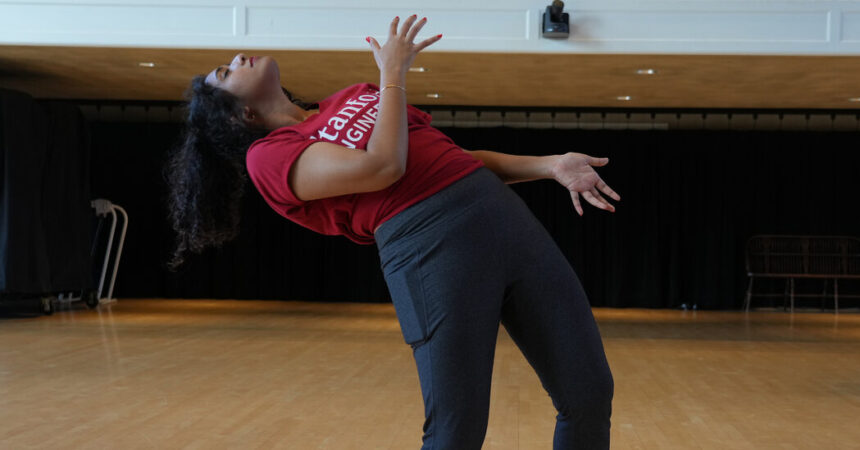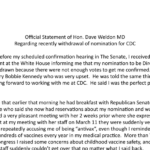Final spring, Tia Washington, 52, a mom of three in Dublin, Calif., obtained a stern warning from her physician: If she didn’t shortly achieve management of her hypertension, she was prone to find yourself within the emergency room.
He wrote a prescription for blood strain medicine and urged her to see a well being coach, too. Ms. Washington reluctantly agreed.
“I didn’t wish to die,” she stated.
To her shock, the well being coach wished to speak about greater than very important indicators. Ms. Washington discovered herself opening up about how she disliked medical doctors (and medicines). How she tended to handle the wants of labor or household earlier than her personal. How her job had created “super stress.”
Collectively, they determined that Ms. Washington would attend two weekly motion lessons, test in repeatedly with a nurse practitioner and obtain free vegatables and fruits from a “meals as medication” authorities program.
By the tip of the dialog with the well being coach, Ms. Washington stated, the message was clear: “Tia, take note of your self. You exist.”
Ms. Washington’s expertise is only one instance of how a apply known as social prescribing is being explored in the USA, after being adopted in additional than 20 different nations. The time period “social prescription” was first popularized in Britain after it had been practiced there in varied varieties for many years. Whereas there isn’t one universally accepted definition, social prescriptions typically intention to enhance well being and well-being by connecting individuals with nonclinical actions that handle underlying issues, corresponding to isolation, social stress and lack of nutritious meals, which have been proven to play a vital position in influencing who stays nicely and for the way lengthy.
For Ms. Washington, who’s amongst 1000’s of sufferers who’ve obtained social prescriptions from the nonprofit Open Supply Wellness, the expertise was transformative. She discovered a much less anxious job, started consuming extra healthfully and discovered easy methods to maneuver extra in the course of the day. A couple of yr later, she was in a position to cease taking blood strain medicine fully.
Elsewhere in the USA, related packages are underway: On the Cleveland Clinic, medical doctors are prescribing nature walks, volunteering and ballroom dancing to geriatric sufferers. In Newark, an insurance coverage supplier has teamed up with the New Jersey Performing Arts Middle to supply sufferers glassblowing workshops, live shows and museum exhibitions. A nonprofit in Utah is connecting psychological well being sufferers with neighborhood gardens and serving to them take part in different actions that carry them a way of which means. And universities have began referring college students to arts and cultural actions like comedy reveals and live shows as a part of their psychological well being initiatives.
The strategy has additionally drawn the eye of the Federal Reserve Financial institution of New York’s neighborhood improvement staff, which is able to carry collectively specialists over the course of the following yr to debate how social prescriptions might help enhance well-being in low-income neighborhoods.
The method of creating referrals just isn’t new amongst neighborhood well being professionals and social staff. Social prescribing differs by offering a sort of accountability coach, known as a hyperlink employee in Britain, who assesses the wants and pursuits of purchasers after which connects them to native organizations together with volunteer teams and cultural establishments.
Lately, the English nationwide well being care system has employed 1,000 new hyperlink staff, with the aim of creating social prescribing out there to 900,000 individuals by 2024. However placing such a plan in place in the USA, which doesn’t have a socialized well being care system, can be way more sophisticated, specialists say.
“There’s motive to be skeptical about how far this may go,” stated Daniel Eisenberg, a professor of well being coverage and administration on the Fielding College of Public Well being on the College of California, Los Angeles. “Our well being care system tends to make solely very incremental adjustments, and I feel all of the biases constructed into the system favor medical care and extra acute intensive care.”
If social prescriptions might help hold individuals out of the emergency room for routine complaints, which may save billions of {dollars}, this will present further incentive for medical health insurance suppliers to assist cowl the prices, specialists say.
Horizon Blue Cross Blue Defend, New Jersey’s largest well being insurer, is collaborating in a research analyzing whether or not an arts prescription program will enhance sufferers’ high quality of life and cut back well being disparities. Additional down the highway, the corporate will discover out whether or not the prescriptions may lower your expenses by lessening sufferers’ reliance on the E.R. for extraordinary well being care wants.
Whereas earlier analysis on social prescribing means that it may possibly enhance psychological well being and high quality of life and that it would cut back physician visits and hospital admissions, most of the research have been small, reliant on sufferers’ self-reporting and carried out with no management group.
The potential advantages have made social prescription “a very scorching matter,” stated Jill Sonke, the analysis director on the College of Florida’s Middle for Arts in Drugs. She is working with British researchers to determine all the social prescription packages in the USA — the quantity now tops 30 — and study what labored and what didn’t.
The packages will not be a panacea, Dr. Sonke stated, and there are numerous attainable pitfalls to enacting them on a wider scale in America. If social prescriptions will not be accessible to people who find themselves uninsured or underinsured, for instance, or if individuals don’t really feel welcome on the locations they’re being referred to, then “the system isn’t doing what it’s meant to do,” she stated. “It truly is about everybody gaining access to wellness and prevention,” she added.
In January, Stanford College and Rutgers College-Newark started prescribing arts and cultural actions to college students as an enlargement of the faculties’ psychological well being providers. At Rutgers, college students can attend cultural occasions in Newark for free of charge, through a partnership with the New Jersey Performing Arts Middle. At Stanford, the scholars are referred to campus occasions like live shows, artwork exhibitions or specialised lessons, and prescriptions are managed by Artwork Pharmacy, a start-up in Atlanta that additionally offers arts prescriptions in Georgia and Massachusetts.
At each colleges, any scholar, together with these with out psychological well being points, can search a referral from a skilled workers member. Pupil leaders at Rutgers may make referrals.
Kristi Maisha, a Stanford graduate scholar who research civil engineering, stated she determined to take part as a result of she wished to take a second away from the depth of her tutorial schedule.
“It isn’t very helpful to remain in that head house on a regular basis,” she stated. “So I used to be undoubtedly searching for one thing that might sort of break me out of that.”
Ms. Maisha selected to attend an improvisational dance class led by a choreographer — although she confirmed up with some trepidation. “What am I doing?” she thought as the category started.
However she adopted the teacher’s lead, contorting her torso and limbs, and even her face, into new shapes — main along with her physique as an alternative of her mind. The category grew to become symbolic of merely residing within the second, she stated, and he or she felt free of the “deliberate out, predetermined ideas” that always confined her.
“Now that I do know that it’s really fairly an excellent time, I’m extra prone to do it, no matter them prescribing it or not,” she stated.








